
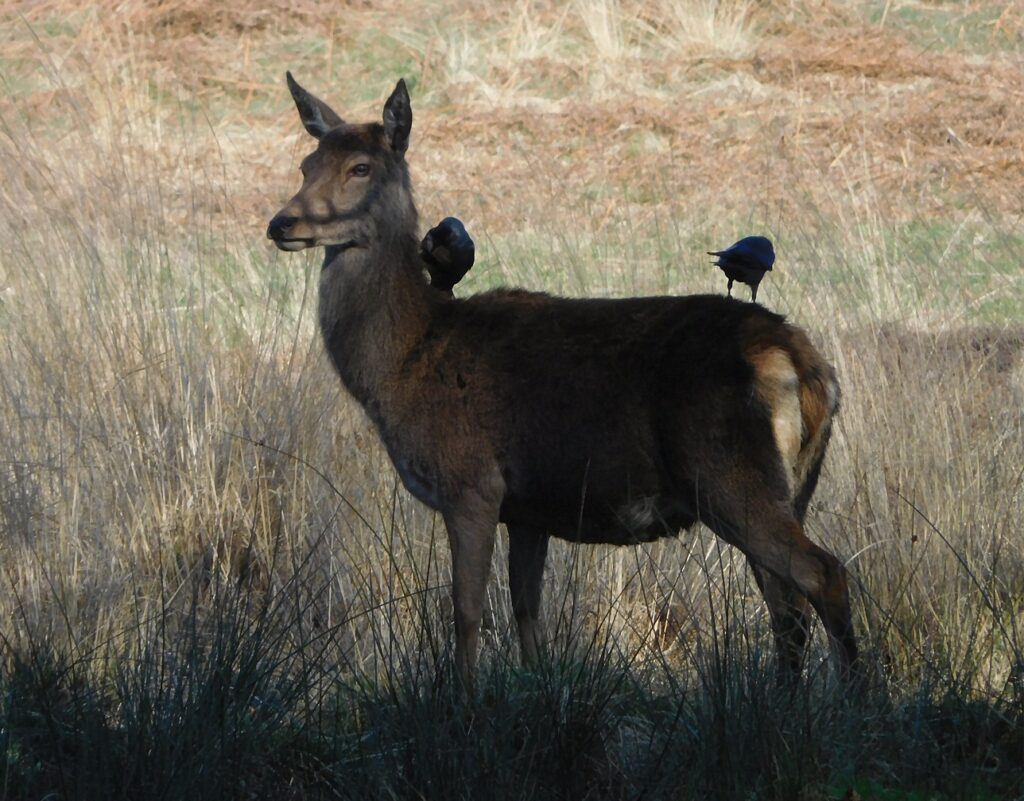
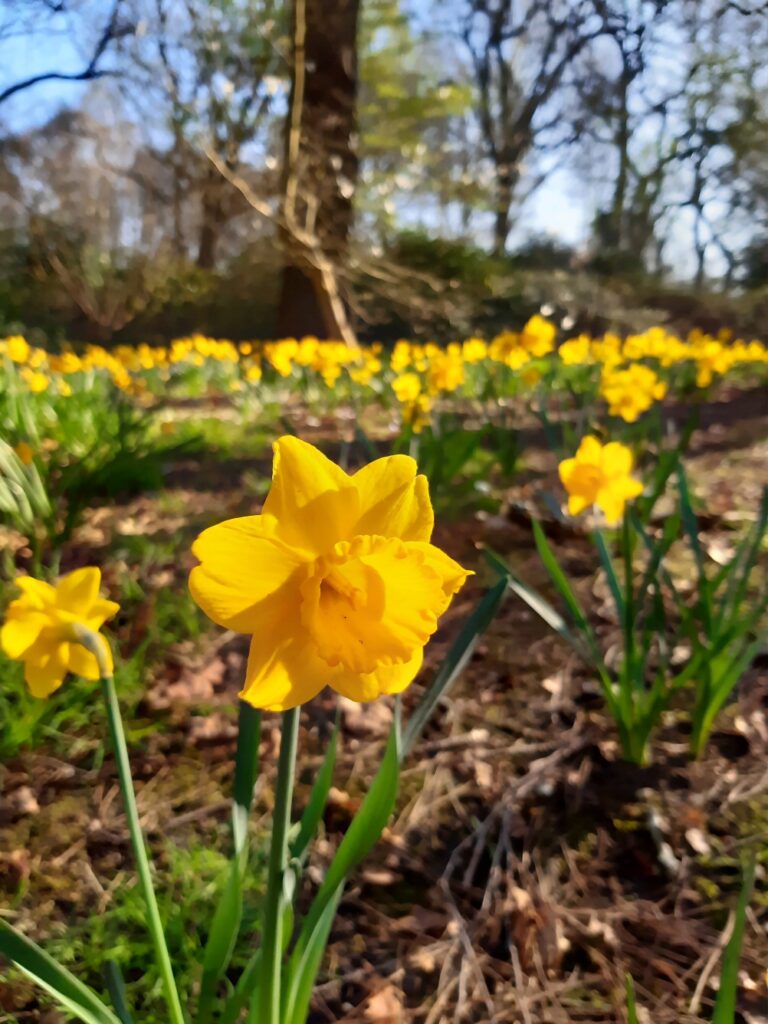



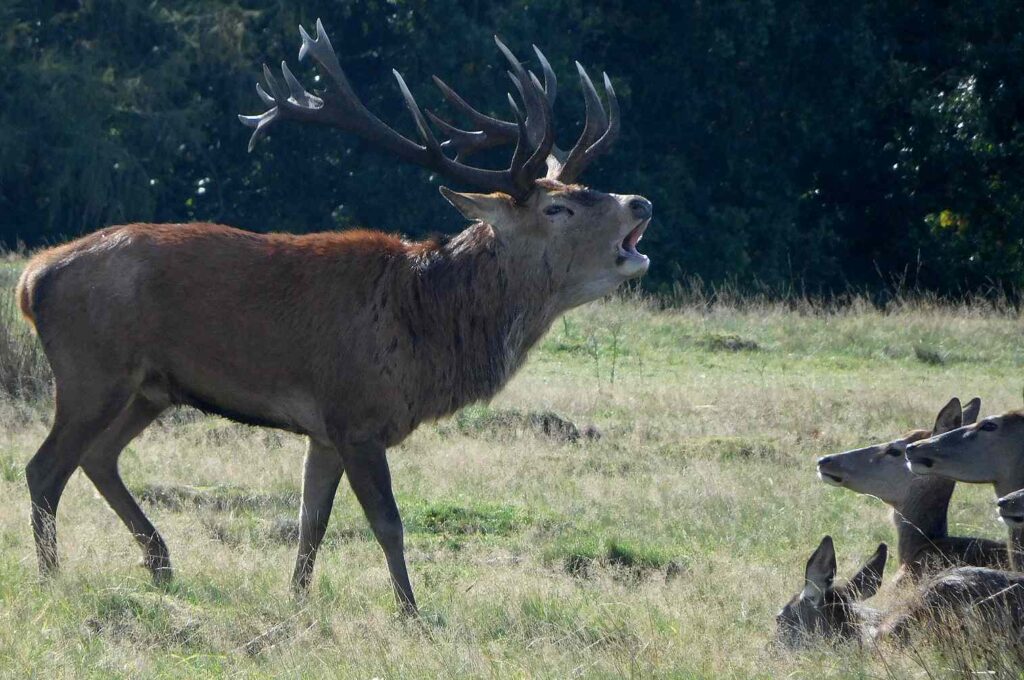
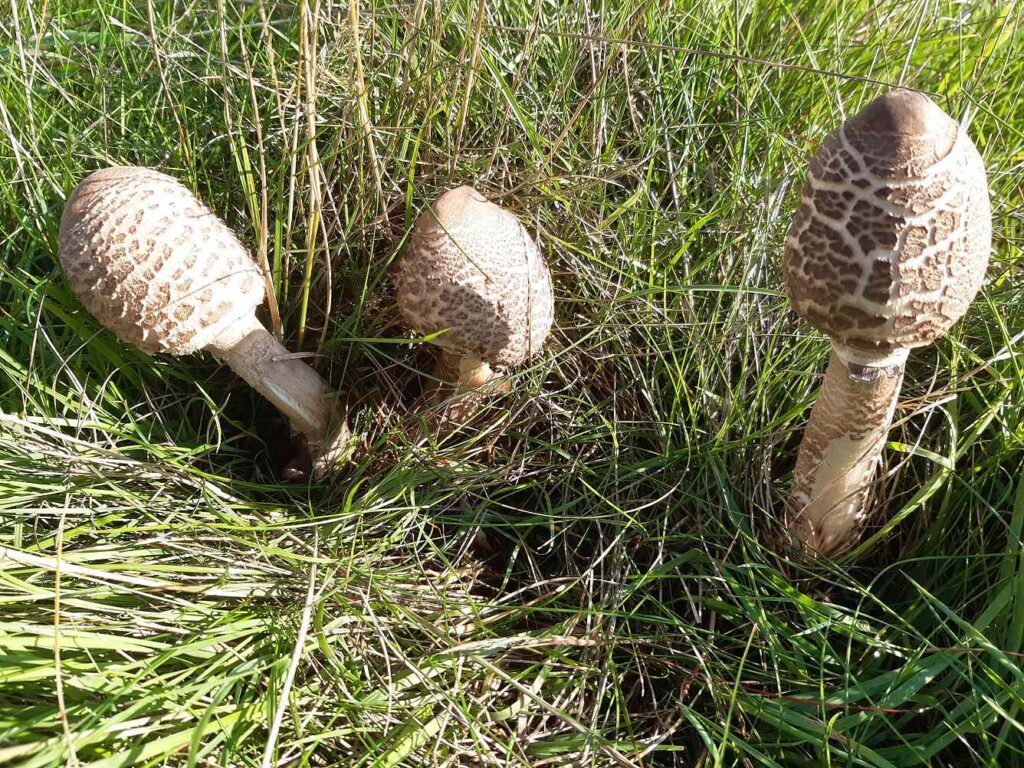
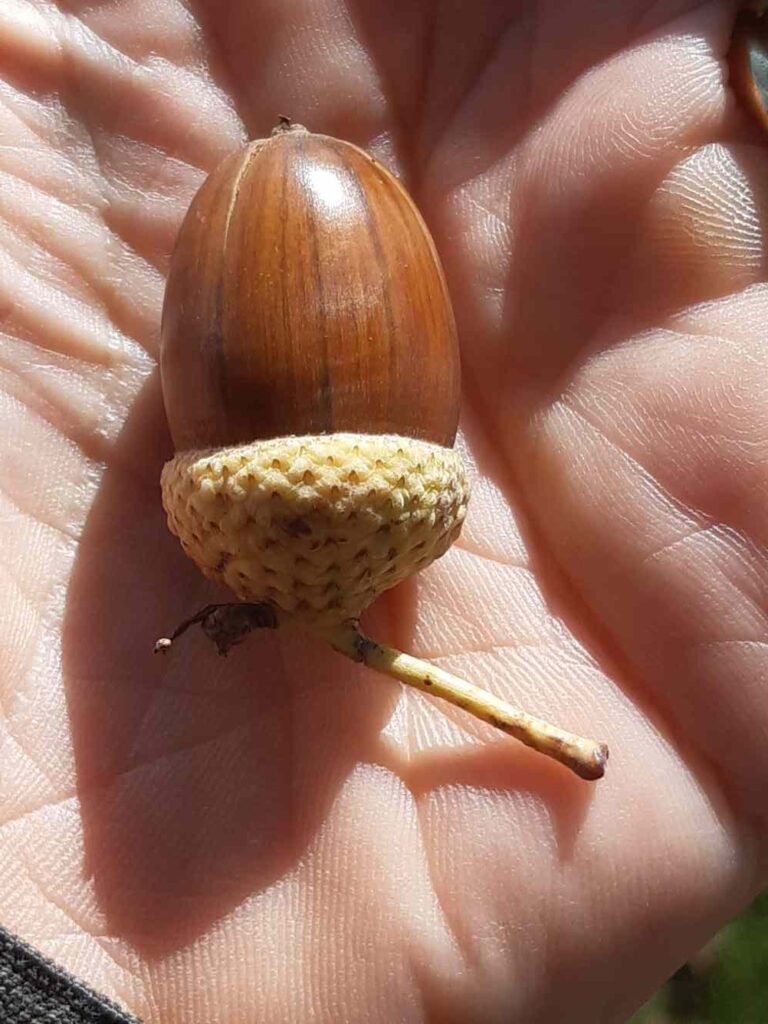
Walking down from the woods across the wide rough area with rushes, two Skylarks got up, twittering, and perched briefly on the Bracken: a very special sight for London.
Down past the Pen Ponds at the side of a wood, a Green Woodpecker flew handsomely up into a tree, swiftly hiding itself round the back of the trunk.
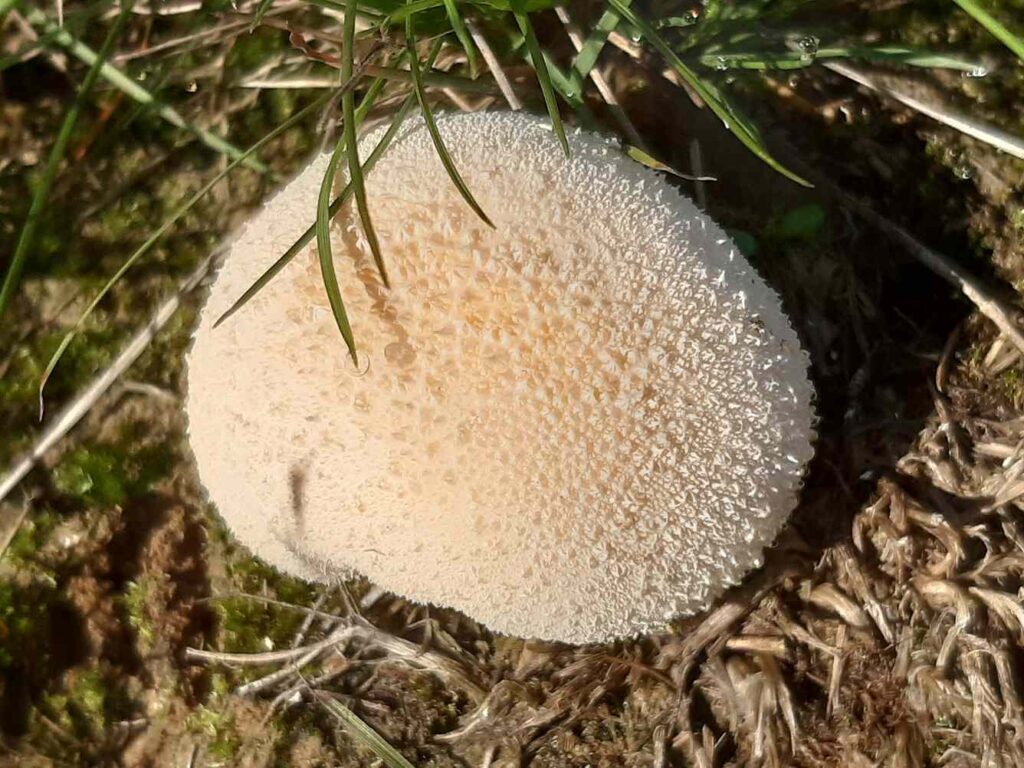
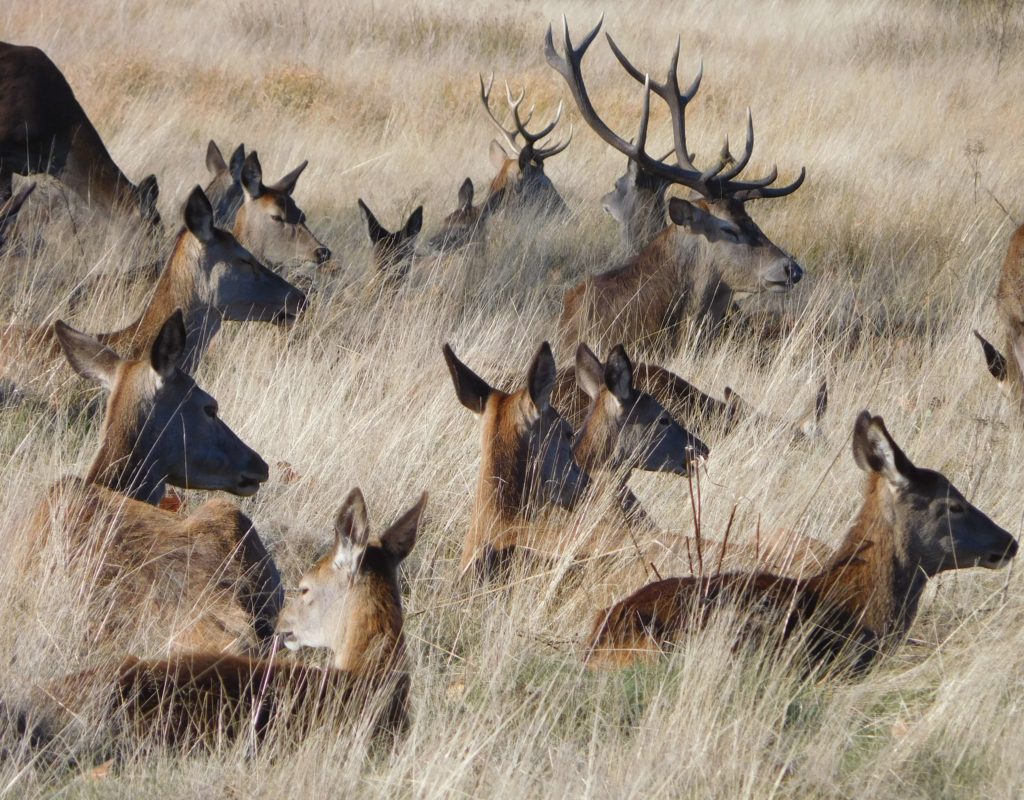
Well, I might reasonably have expected to see Red Deer in Richmond Park in today’s beautiful sunshine, but Dragonflies for Hallowe’en? That was a bit of a surprise. I saw that magical sparkle about 7 times, twice consisting of an attached pair (“in cop”) of Common Darters. Most of the rest were certainly also darters, but once I caught a flash of blue, so perhaps that was a Migrant Hawker or more probably a Southern Hawker dashing into the distance on the breeze.
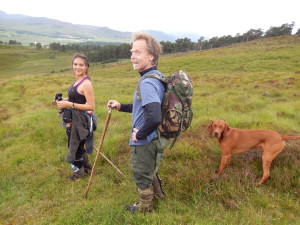
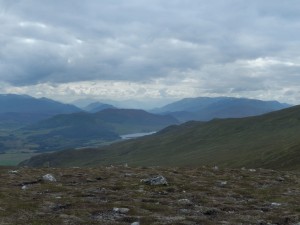

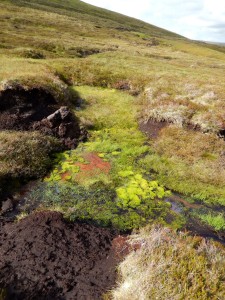
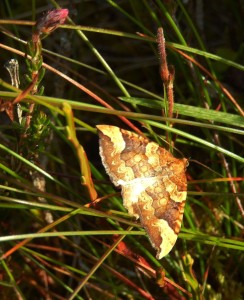
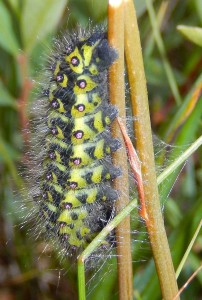
I was lucky enough to catch an Emperor Moth caterpillar in the act of preparing to pupate; the full-grown caterpillar with its hairy aposematic yellow-green body marked with black is tied on to the grass stems with a hundred silken threads.
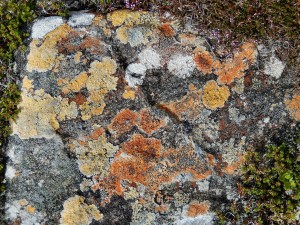
On the summit ridge, this flat rock was covered with magnificently coloured lichens in shades of orange, yellow ochre, grey and white, with black, grey, brown or burgundy apothecia.
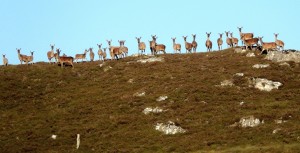
Towards the end of the eight-and-a-half-hour walk with the sun westering low over the hills, we caught sight of a herd of 32 hinds. The little Nikon captured this nice shot of them, all peering down at us from the skyline.
In Scotland, the male of the Red Deer is called simply a Stag, all other male deer (presumably Roe in that country) being known as Bucks. Down here, with Sika and other species about, it may be wise to name the species explicitly. There are signs up warning of the impending cull, so now may be the best time of year to see fine large stags resting quietly, the rut over.
I was welcomed to the park by a flock of Jackdaws chattering in the trees. Down in the valley, last year’s grass stalks are whitening, the fine big anthills well outlined in the low winter sunlight.
A Stonechat was perched on a slender stalk, level with the tops of the grass; there cannot be much in the way of insect food to catch just now.
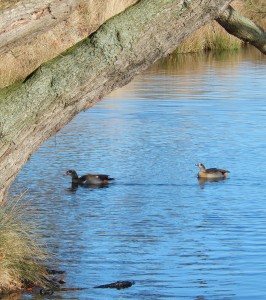
On the Pen Ponds, there were remarkably few waterfowl of any kind, but the lower pond had half-a-dozen Pochard. the males handsomely rufous-headed, a pair of Wigeon, the male with a conspicuous white wing-bar, and tucked in a corner under the willows a pair of Egyptian Geese, taking to the water and protesting with short dry honks when molested by a dog.
Walking back up the hill, a Kestrel hovered briefly, rested in a tree giving a good view of his spotted breast and back. Two herds of Red Deer, one at the base of the hill, one at the top, both with all ages and both sexes together, grazed silently. In the muddiest places, footprints of men, dogs and deer clustered together.
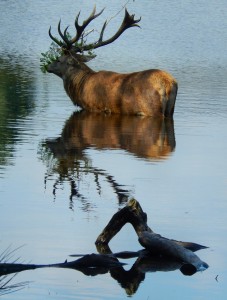
An Indian Summer is one of those special times. Yes, autumn is here; yes, flowers and leaves will soon fall; yes, season of mists and mellow fruitfulness, all of that: but for a brief moment, we know it is warm, even hot; that the time is precious, and we must seize the moment; and we drop everything to go outside with binoculars and camera to see whatever is to be seen.
And it is as wonderful as we could have hoped, warm and blithe. The Jackdaws hop about, quick to take their opportunities: some seem to live exclusively on sandwiches and crumbs. A Jay perches close by on an oak branch, abandoning the usual caution of its species. A series of high-pitched calls is not the usual posse of Ring-Necked Parakeets, but a family group of three Hobbies almost overhead, wheeling, diving, chasing each other, showing off their power and agility with long angled wings, stooping into a mock dive, fanning a tail, their black moustaches clearly visible.
Down at the Pen Ponds, pairs of Common Darter dragonflies are still in cop, laying eggs while the sun shines; around them zip Migrant Hawkers, and I glimpse one blue damselfly too. We walk around the ponds; a Heron flaps quietly across the water; a pair of Mute Swans ride high towards us, their two grey cygnets sailing between them.
And then, quite suddenly, I saw him: a stag with fine 14-point antlers, brimming with testosterone, preparing for the autumn rut. He stood quite still, up to his belly in the water. He had decorated his head with vegetation – Bracken and some Oak twigs – and was now quietly absorbing the elements, sun and water, as he listened to the occasional preliminary roar of another stag in the distance. In a few weeks he will be fighting for a harem of hinds; but today, he seemed contemplative.
A few hundred yards away, in the open grassland, a group of twenty hinds is accompanied by a couple of young males with nearly straight antlers. A big stag will surely put them to flight in an instant when the rut begins; but today, they grazed quietly with the females.
A Buzzard soared overhead, circling in the fair-weather thermals; one of the young Hobbies dashed past.
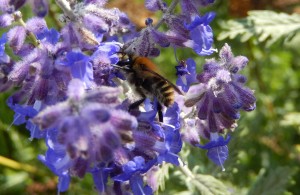
In the beautiful garden of Pembroke Lodge, they were preparing for a wedding, the lawn looking its verdant best, the bees buzzing softly in the still colourful flowerbeds full of tall daisies and delphiniums, lavender and alkanet. On the belvedere terrace, with its spacious view to the West, lovers made soft conversation at the café tables.
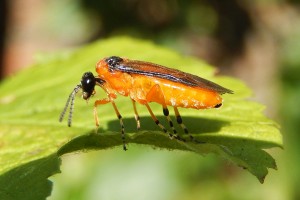
Back at home, a pair of bright saffron-coloured Gooseberry Sawflies (there are actually several species that attack gooseberries and other currants indifferently, I’m not sure what species this one is) were joyfully mating near my currant bushes, while others flew sedately about – they have a rather unusual steady flight, not like anything else. The air was warm and light; and the sawflies did not seem to have made any impact on the fruit crop. I was happy to get a photograph of one of the tiny insects, happy to see them flourishing in this Indian Summer.